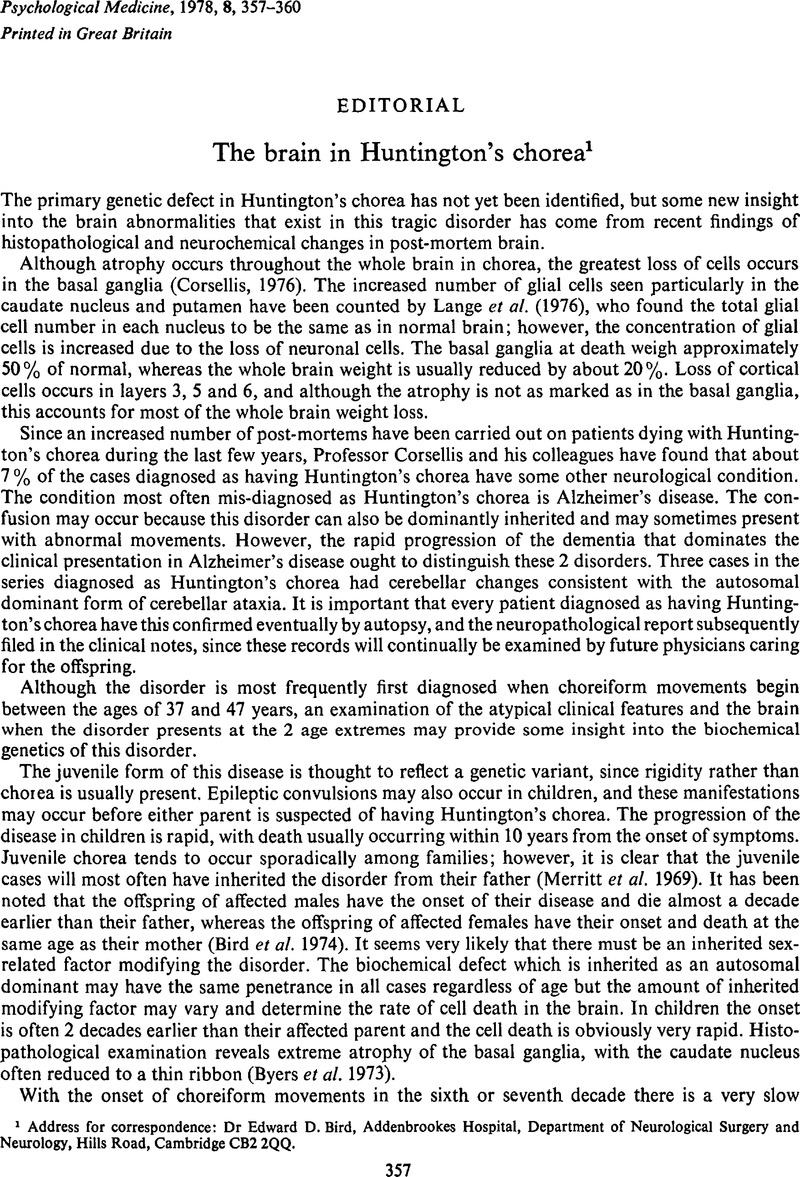Crossref Citations
This article has been cited by the following publications. This list is generated based on data provided by Crossref.
Hayden, Michael R.
1981.
Huntington’s Chorea.
p.
93.
Gilbert, Jeffrey M.
Brown, Beverly A.
Strocchi, Paola
Bird, Edward D.
and
Marotta, Charles A.
1981.
The Preparation of Biologically Active Messenger RNA from Human Postmortem Brain Tissue.
Journal of Neurochemistry,
Vol. 36,
Issue. 3,
p.
976.
Marshall, Ann
1984.
Movement Disorders: Tremor.
p.
95.
Waters, C.M.
Peck, R.
Rossor, M.
Reynolds, G.P.
and
Hunt, S.P.
1988.
Immunocytochemical studies on the basal ganglia and substantia nigra in Parkinson's disease and Huntington's chorea.
Neuroscience,
Vol. 25,
Issue. 2,
p.
419.
Filloux, F.
Wagster, Molly V.
Folstein, Susan
Price, Donald L.
Hedreen, John C.
Dawson, Ted M.
and
Wamsley, James K.
1990.
Nigral dopamine type-1 receptors are reduced in Huntington's disease: A postmortem autoradiographic study using [3H]SCH 23390 and correlation with [3H]forskolin binding.
Experimental Neurology,
Vol. 110,
Issue. 2,
p.
219.
Masucci, Elmo F.
Borts, Frederick T.
and
Kurtzke, John F.
1990.
CT brainstem abnormalities in the differential diagnosis of Huntington's disease.
Computerized Medical Imaging and Graphics,
Vol. 14,
Issue. 3,
p.
205.
Koshy, Beena T.
and
Zoghbi, Huda Y.
1997.
The CAG/Polyglutamine Tract Diseases: Gene Products and Molecular Pathogenesis.
Brain Pathology,
Vol. 7,
Issue. 3,
p.
927.
Jacobs, Diane M
1998.
The role of neuropsychological testing in neurological disease.
Medical Update for Psychiatrists,
Vol. 3,
Issue. 5,
p.
139.
Hadzi, Tiffany C.
Hendricks, Audrey E.
Latourelle, Jeanne C.
Lunetta, Kathryn L.
Cupples, L. Adrienne
Gillis, Tammy
Mysore, Jayalakshmi Srinidhi
Gusella, James F.
MacDonald, Marcy E.
Myers, Richard H.
and
Vonsattel, Jean-Paul
2012.
Assessment of cortical and striatal involvement in 523 Huntington disease brains.
Neurology,
Vol. 79,
Issue. 16,
p.
1708.





